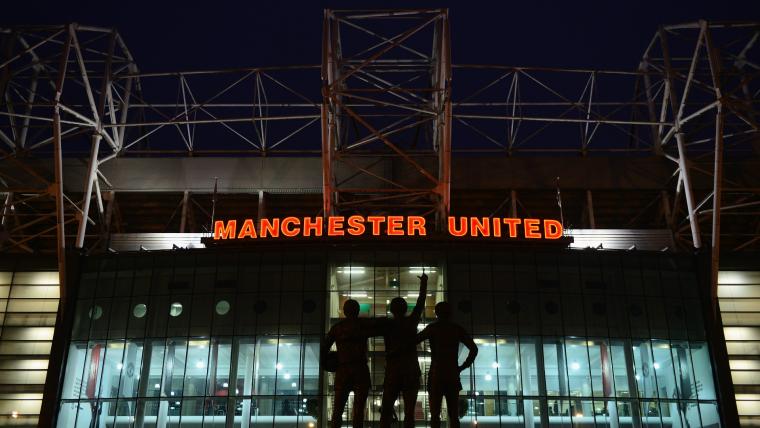Manchester United fans were alarmed when figures released for the 2023-24 season showed that the club had a negative net spend of nearly £1.2 billion ($1.5bn) in transfer fees over the previous decade. The findings, provided by the CIES Football Observatory, revealed that United had far outspent any other club in world football during that period, with Chelsea coming in second with a net spend of £885.5m ($1.1bn). This raised concerns about how United has managed to continue spending heavily despite financial constraints imposed by Financial Fair Play (FFP) regulations and other spending rules. Many are questioning what steps the club needs to take to ensure compliance with these regulations. The Sporting News will now provide the latest updates on how these measures are affecting United and what the future holds for the 20-time English champions.
Under the Premier League’s profitability and sustainability rules (P&S), clubs are only allowed to incur a maximum loss of £15m ($19.6m) over a three-year period. This limit can be extended to £105m ($137.5m) if club owners provide secure funding measures, such as buying shares, to cover the additional £90m ($117.8m) difference. Unfortunately, United’s owners, the Glazers, have not invested any money in the club since their leveraged buy-out in 2005. This means that United can only afford a margin of error of £15m. Despite incurring a pre-tax loss of £150m ($196.4m) for the 2021/22 season, mainly due to the impact of the Covid-19 pandemic, United managed to pass the Premier League’s tests. They were able to average out their financial performance over the three fiscal years and also offset losses caused by the pandemic in 2019/20 and 2020/21.
However, before the start of the 2022/23 season, United’s third-quarter results indicated that they would record a pre-tax loss of £203m ($265.8m) over the past three years, as reported by The Athletic. United submitted their most recent figures in March 2023, and if they were at risk of breaching the rules, they would have received a notification from the Premier League around that time, according to the report. To mitigate the situation, United is relying on projected record revenues ranging from £630m ($824.4m) to £640m ($837.5m), as well as deductions related to the pandemic and investments aimed at the long-term future of the club, such as the investment in the academy.
The concern for United lies in their forthcoming submission for the next three-year P&S cycle, which will include the substantial £203m loss without adjustments for the pandemic. They are also obligated to meet UEFA’s FFP requirements based on their 2022/23 and 2023/24 accounts. According to these regulations, United can only incur a loss of £4m ($5m) over three years without any leeway for funding from potential new owners. Additionally, UEFA’s squad cost control rules dictate that clubs can only spend 90% of their revenues and profits from player sales on wages, transfer fees, and payments to agents. This percentage will decrease to 80% next season and 70% from 2025/26. United’s financial situation was further highlighted by a fine of around £260,000 ($317,000) imposed by UEFA due to a “minor break-even deficit” during the monitoring period for the 2022-23 season, which was related to spending between 2019 and 2022.
Despite these financial constraints, Manchester United made significant investments in the summer transfer window. The club spent heavily on players such as striker Rasmus Hojlund from Atlanta, midfielder Mason Mount from Chelsea, and goalkeeper Andre Onana from Inter Milan. These signings amounted to an initial total of £163m ($207m), with potential additional fees depending on performance. However, restrictions imposed by FFP rules made it difficult for United to secure a permanent move for midfielder Sofyan Amrabat, who joined on a season-long loan from Fiorentina. United also signed goalkeeper Altay Bayindir from Fenerbahce and defender Jonny Evans on a free transfer, while Sergio Reguilon was obtained on loan. To navigate the financial landscape, United may pursue further loan deals or free transfers.
Player sales would provide United with more financial flexibility. It was reported that West Ham had an offer of £30m ($25.9m) accepted for defender Harry Maguire in the summer, and there was interest in midfielder Scott McTominay for a similar price. Outgoing transfers can be directly factored into FFP calculations, although United’s track record in this area has been poor compared to Chelsea, who made £5.3m ($6.9m) for every £1m ($1.3m) of player sales between 2013 and 2022. The club is acutely aware of the financial implications of their transfer decisions and meticulously calculates their viability within the parameters of FFP regulations.
As the Premier League continues and the financial landscape evolves, the future remains uncertain for Manchester United. The club must navigate the tight financial restrictions imposed by FFP and other regulations, while still remaining competitive in the transfer market. The next few years will prove crucial in determining United’s ability to balance their financial obligations with their ambitions on the pitch.
(Note: The unrelated TV channel and live stream information at the end of the original content has been omitted as it is not relevant to the topic of the article.)

I have over 10 years of experience in the cryptocurrency industry and I have been on the list of the top authors on LinkedIn for the past 5 years. I have a wealth of knowledge to share with my readers, and my goal is to help them navigate the ever-changing world of cryptocurrencies.







